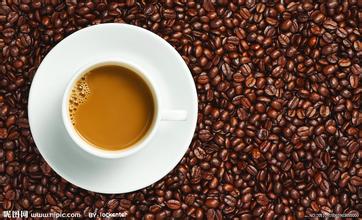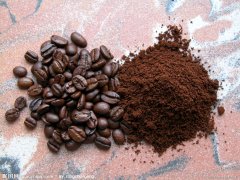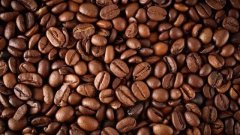Common sense of the difference between Blue Mountain, Mocha and Manning Coffee beans

This is the name of the coffee item.. Coffee named after the place of origin.. In fact, most coffee beans are named after places of origin or distribution centers. Blue Mountain Coffee is the best coffee in the world. The Blue Mountains are located in the eastern part of the island of Jamaica, hence its name because it is surrounded by the Caribbean Sea. On sunny days, the sun shines directly on the blue sea, and the peaks reflect the bright blue light of the sea. The highest peak of the Blue Mountains, which is 2256 meters above sea level, is the highest peak in the Caribbean and a famous tourist attraction. Located in the coffee belt, with fertile volcanic soil, fresh air, no pollution, humid climate, foggy and rainy all the year round (the average precipitation is 1980 mm, the temperature is around 27 degrees), such a climate has created the world-famous Jamaican Blue Mountain Coffee. It also creates the highest price coffee in the world. no, no, no. This kind of coffee has the characteristics of all good coffee, not only full-bodied and mellow, but also because of the perfect combination of sweet, sour and bitter coffee, it has no bitter taste at all, only a moderate and perfect sour taste. It is generally drunk on a single product, but because the output is very small and the price is extremely expensive, it is generally made with coffee with a similar taste on the market. Mocha coffee beans exported from the port of Mocha: mocha (Ethiopia) has a special flavor. Its unique sweet, sour, bitter taste, extremely elegant. It is an excellent variety loved by ordinary senior people. It is common to drink in a single product. The lubrication of the drink is delicious. The mellow taste lasts for a long time. If mixed coffee is mixed, it is an ideal variety. "Mocha" is civilized as one of the earliest and once the largest coffee trade ports in the world. It is located in Yemen across the Channel of Ethiopia. Ethiopian coffee was once exported through the Yemeni port of Mocha. Now the port of Mocha has dried up, but coffee produced in nearby areas is still used to calling it mocha. Harald coffee, which grows within 900m from the Darolebu plain to 2700 m from the highland mountain range of Chercher in eastern Ethiopia. These mountains do provide unique features for these perennial coffee beans: the fruit is full and long, moderately acidic, with a typical mocha flavor. Harald Coffee is the world's leading premium coffee; although the variety is produced abroad, it gives people a friendly feel, smooth and smooth taste, giving people the rich taste of real mocha coffee. Harald coffee has almost the lowest caffeine content, about 1.13%. Harald is not only one of the best sun-tanned coffee in the world, known as "coffee in the wilderness", but more like a beautiful legend. Ethiopia is mainly Arabica original; exports raw beans; adopts drying and washing processing methods; mainly produces in the southwest, east and south; harvest time is August / January every year. Tementa Mantenin is a fine coffee bean grown in the mountains of the plateau at an altitude of 750 to 1500 meters above sea level. Arabica seedlings were first introduced to Ceylon (present-day Sri Lanka) and Indonesia by the Dutch in the 17th century. In 1877, a large-scale disaster hit the Indonesian islands. Coffee erosion destroyed almost all the coffee trees. People had to give up Arabica, which had been in operation for many years, and imported Robusta coffee trees with strong disease resistance from Africa. Indonesia today is a big coffee producer. Coffee is mainly produced in Java, Hamatra and Tilavi, and Robusta species account for 90% of the total production. Ramandra Mantenin is a rare Arabica species. The trees are planted on hillsides between 750m and 1500 m above sea level, and the mysterious and unique species of Chimondala give Mantenin coffee a rich aroma, rich taste, strong flavor, slightly chocolate and syrup flavor.
Important Notice :
前街咖啡 FrontStreet Coffee has moved to new addredd:
FrontStreet Coffee Address: 315,Donghua East Road,GuangZhou
Tel:020 38364473
- Prev

How to make a good cup of coffee beans at home
Seeing the solicitation of coffee in the topic of experience, I can't help but recall my experiences of drinking coffee in the past few years: from the black history of drinking McDonald's coffee in the middle of the night when I was in primary school, to report to the cafe every day for a period of European life, and then to start messing with all kinds of coffee at home, and finally I can no longer drink too strong coffee because of my health.
- Next

The picking of coffee beans coffee beans are the seeds of coffee trees.
Coffee beans are the seeds of coffee trees. After three or four years of growth, the coffee tree matures and begins to bear fruit, with one fruit arranged in clusters or clusters along the branches. The outside of the seed is a layer of peel, which can be picked as soon as it turns red. Under the red skin (exocarp) there is a layer of pulp (mesocarp), which is a small thin layer, and then a layer of material endocarp like parchment. In
Related
- Guji coffee producing area of Guji, Ethiopia: Humbela, Shakiso, Wulaga
- What is the most expensive variety of Qiloso in BOP multi-variety group?
- How to store the coffee beans bought home?
- Why are Yemeni coffee beans so rare now?
- Ethiopian Sidamo all Red Fruit Sun Sun Santa Vini Coffee beans
- SOE is mostly sour? What does it mean? Is it a single bean? what's the difference between it and Italian blending?
- Is Italian coffee beans suitable for making hand-brewed coffee?
- How to choose coffee beans when making cold coffee? What kind of coffee beans are suitable for making cold coffee?
- Just entered the pit to make coffee, what kind of coffee beans should be chosen?
- Can only Japan buy real Blue Mountain Coffee? What are authentic Jamaican Blue Mountain coffee beans?

